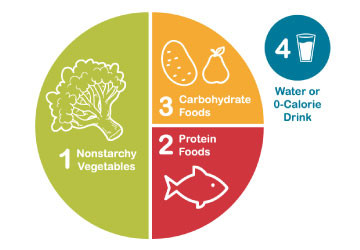You may have heard of the macronutrients (or “macros” for short). Even if you don’t know what
they are, you’ve likely seen them listed on the Nutrition Facts panel of all the packaged foods
you buy–carbohydrates, protein, and fat. These macronutrients are the larger components of
food and make up all the calories (also known as energy) that are found in our food. All three
macros serve different and important roles in the body, which we’ll cover the basics of here and
how to ensure you’re getting enough of each macro.
Carbohydrates
Carbohydrates are long chains of sugars linked together.
Once in the body, the carbohydrates are broken down to, and used as, those smaller sugar
molecules. Carbohydrates are the body’s preferred energy source, especially for higher intensity
exercise and activity, and they’re the brain’s preferred energy source all the time. It’s important
to consume enough carbohydrates to ensure we have the energy we need throughout the day.
Sources of carbohydrates include (but are not limited to) rice, pasta, breads, cereals, granola,
fruit, beans, starchy vegetables (like potatoes, sweet potatoes, corn, and peas), and dairy foods
(such as yogurt and milk), and grains like quinoa and oats. A good general rule is that
carbohydrates should make up 45-65% of our calories, but your specific needs may vary.
Protein
Protein is found in all the cells in our body, most notably, it’s the building
block of our muscle tissue. Our body is constantly performing repair and remodeling to keep
everything healthy, and we need to ensure we’re eating enough protein to make sure our body
has the nutrients it needs to keep all our tissues healthy. Activity increases our body’s need for
protein by increasing the breakdown of tissues (requiring more protein for proper recovery and
repair). A general rule is that protein should make up 20-35% of our calories, but, again, your
specific needs may vary.
Fat
Our final macronutrient of discussion is fat. Fat is a storage form of energy, insulates our body,
helps to protect our organs, and fat is used by the body to make our hormones (which are our
body’s signaling molecules). Interestingly, while carbohydrates and protein both contain 4
calories per gram, fat is much more energy dense at 9 calories per gram, so the total amount of
it that we need to consume is quite a bit smaller than the other 2 macronutrients. A general
guideline is that fat should make up 20-35% of our calories.
How can I use this information?
If numbers and logging food to determine your balance of macronutrients isn’t for you, another
way you can make sure you’re getting a good balance of nutrients is through something called
the Plate Method. This method of portioning foods is so useful because of its simplicity. All you
have to do is portion the components of your meals as a proportion of your plate. With this, at
each meal, aim to fill ¼ of your plate with lean protein, ¼ of your plate with carbs and starches,
and ½ of your plate with vegetables and/or fruits. Here’s an example:

The size of your plate (and the size of each portion, as a result) should vary based on your individual needs. Additionally, depending on your goals, your proportion of each component of your meals may need to be adjusted. This is best discussed and determined in conjunction with your dietitian though!Need help putting this into practice? Reach out to our dietitian HERE.




